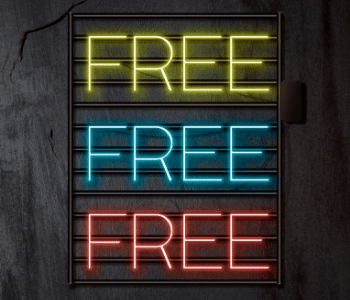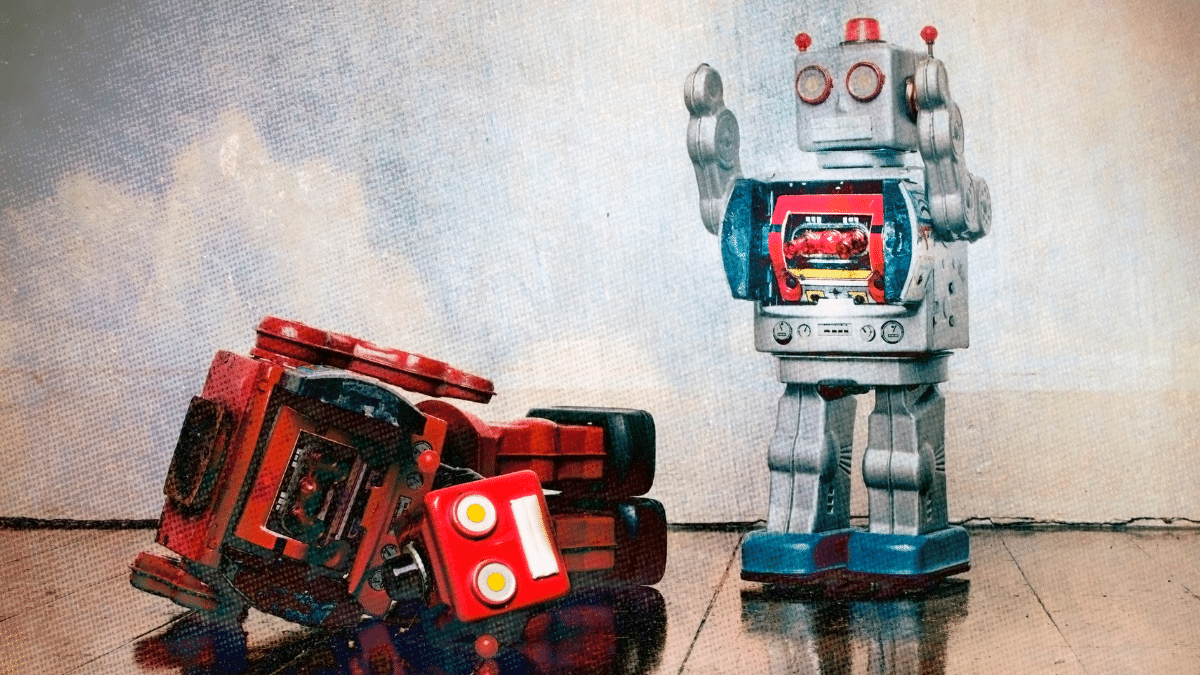Using a Free AI to Write an Essay

Back in December, I decided to see what kind of essay I could get for super cheap. I then went to Fiverr and paid an essay writer $10 to pen me a 500-word essay about the history of copyright.
The essay I received was both garbage and worrisome. While it wouldn’t withstand any serious scrutiny, it’s easy to see how instructors and graders might be fooled by it if they weren’t paying close attention.
However, that story got me wondering, What if I was feeling even more lazy and spendthrift?
So, I decided to seek out an AI writing tool that was A) Completely free to use and B) Would do the bulk of the writing for me.
After some light searching, I found a prominent essay-writing bot that claimed to be my “professional essay typer” and set it loose on the same subject that my human ghostwriter did a few months ago.
To that end, the results were interesting. Pasted below (without edits) is my 500-word essay about copyright history.
Copyright History (As Told by a Free Bot)
Today usually subsumed under the broader category of statutory rules known as intellectual-property law, document is designed mainly to protect the artist, a firm, or another person against particular unauthorized uses of his work (e.g. , Reproducing this work in any matter structure, writing it, performing it publicly, shooting it, transmitting it, or making an adaptation of it) . The document provides the holder with a special dominance over the created substance that ensures him of both power over its usage and the part of the pecuniary benefits derived from it.This history of document starts with first privileges and monopolies given to printers of volumes. The island Act of Anne 1710, full name “ An Act for this hope of education, by vesting these copy of Printed Books at the writer or buyers of much Copies, during the Times therein mentioned s”, was the first copyright statute. Initially copyright law just used to the repetition of books. Over time different functions , e.g., translations and derivative works were given subject to copyright and document today covers a broad variety of jobs, including maps, performances, pictures, photographs, sound recordings, motion pictures and computer programs.
Yet before the U.S. Law was adopted, copyright was an important legal issue in this new independent country. These Articles of Confederation promoted each government to address this topic, and at 1782, writer and owner Noah Webster lobbied the 13 legislatures to pass copyright laws. New York and New shirt refused him. But in Jan, 1783, America passed the copyright law, which was modelled upon the act of Anne.
Contemporary copyright law has been influenced by the array of older legal rights that have been recognised throughout history, including the ethical rights of the writer who made the job, The economic rights of the benefactor who paid to get the material created, the property rights of the particular owner of the material, and the ruler’s place to censor and to regulate the printing industry. The origins of some of these rights may be traced back to old Greek civilization, old Jewish philosophy, and old Roman philosophy. In Greek society, during the 6th century B.C.E., there emerged the idea of the separate person, including individual ideals, desire, and ability. The human ego is critical in copyright because it describes the ability created by the individual from the rest of society. In old Jewish Talmudic law there may be seen acceptance of the ethical rights of the writer and the system or property rights of the author.
Understanding the Mess

Obviously, this is not a good essay and it’s far worse than the $10 one I got from a human writer, which also wasn’t impressive. In fact, significant portions of it are completely unintelligible. Much of that is caused by the fact that, though they claim to use AI and be a “bot”, they really aren’t.
The bot doesn’t write anything from scratch. Instead, it looks at your paper subject and tries to find what it thinks are relevant paragraphs. Then it “rewrites” the text through spinning in an attempt to hide the duplicate text from the search engines.
To that end, it’s more of a crude article spinning service connected to a search engine. It simply spares the user of having to search for the content to lift. You can see this yourself by comparing the paragraph of the above image (before modification) to the first paragraph of the History of Copyright Wikipedia entry.
This is reflected in the site’s marketing, which makes the claim that they aren’t aiding in plagiarism, that they are simply helping automate what students do anyway.
However, to be 100% clear, this is not how students should be writing. This type of writing is not actual paraphrasing and is the exact opposite of cleanroom writing. Even if a student took all these steps by hand, it would still be plagiarism.
In my test, it was not easy to use. The human operator still must pick the paragraphs to be rephrased and included. However, with this topic, the “bot” simply ran out of relevant copyright paragraphs (this is why the “essay” is barely over 400 words). After the first few paragraphs, it mainly gave me generic content about history and not copyright history.
To make matters even worse, the text couldn’t pass a basic plagiarism scan. A quick spin through CopyScape easily found one of the sources. It seems likely other plagiarism detection systems would work just as well, if not better.
And for the final straw, my promised “free” essay turned out to be anything but. When I went to copy and paste it, they attempted to charge me for the text that was generated.

Though I ended up not paying, I was able to get the text out through other means, it still felt like a broken promise given that it was heavily advertised as a “Free essay writing tool.”
For me personally, as a writer, it would have been faster to just write the essay myself. However, this service is not targeted at those that are comfortable with their writing and do it regularly. It’s targeted at those that either don’t wish to complete an assignment or those that lack the confidence to tackle the task.
Though this essay is far worse than the $10 one I bought, it’s still possible that it could fool someone not closely reading. It has a lot of the correct keywords/buzzwords and the tool can add citations if desired.
One couldn’t write their dissertation this way, but for small assignments that aren’t heavily scrutinized, this may still be able to work, though it is a risky endeavor to say the least.
Why This is a Worry
It’s important to repeat that this is not actual AI writing. Though all the marketing says it is an “artificial intelligence” it creates nothing from scratch. It simply copies other paragraphs, swaps words around and pretends to have made something new.
However, this bot is at the very tail end of what AI can do. It’s a “free” tool offered on the open internet. GPT-3, as well as similar systems, are capable of doing much, much more. That is part of why the researchers behind GPT-3 have withheld the most complete versions of that AI.
That said, as the technology improves it will become more common and it will be easier and easier for students to generate essays. For now, those essays are likely to be like the one above, quite bad. However, the improvements will come sooner rather than later.
That is something educators need to be prepared for.
Bottom Line
Though the essay above may not seem to give much reason to worry. The fact remains that I was able to create an essay in a few minutes for free. Though it doesn’t hold up to any scrutiny, there are still situations where students might find such a work useful (if unethical).
Still, the good news is that the recent spike of interest in essay mills may be doing a decent job of preparing us for a future with better AI writing bots. That issue has forced plagiarism detection services to invest in ways to not just detect copied text, but to determine authorship.
However, this doesn’t necessarily lead to a bright future. Instead, it’s a cat and mouse game as detection bots and generator bots try to outperform one another.
It’s a big part of why it’s time to start thinking about academic integrity more holistically and finding ways to combat it before it can happen. This can include changing the types of assignments that are given, incorporating better honor codes and offering students resources to help in areas they are struggling.
The essay above may not be very impressive. but the fact it exists at all should be of some concern for the future. The tools are just going to get better and easier to use.
What is gobbeldygook today could turn out to be a serious threat in a few years’ time.
Want to Reuse or Republish this Content?
If you want to feature this article in your site, classroom or elsewhere, just let us know! We usually grant permission within 24 hours.
